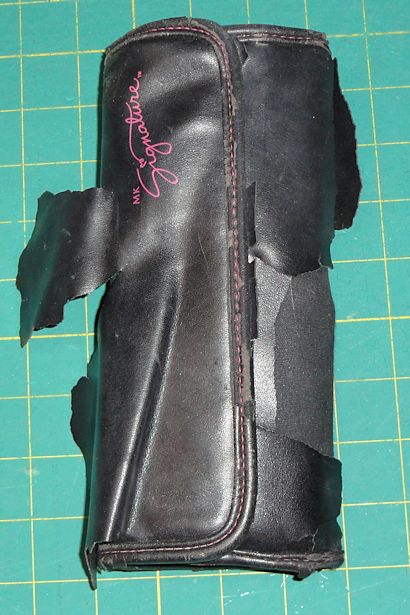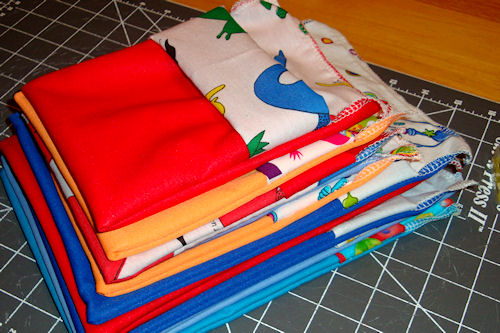Please welcome another guest author to My Happy Crazy Life: Kenneth McCall! Kenneth builds creative and innovative tools for customers seeking self storage units. Kenneth is managing partner at storage.com which provides storage units in Boston and in other locations across the country. In his spare time he likes to get outside, ideally with a boat and waterskis.
Taking Storage Options to New Heights
Create more space in your place by reusing old furniture.
There is an exact correlation between children and homes. As homes are blessed with more children, they conversely become smaller. As those children grow, those homes become smaller still. Then one day you look around and think to yourself, “This house used to be the perfect size. What happened?”
Finding space for everything you need in a home can be challenging, especially when getting a bigger place just isn’t a possibility. If you look on the bright side, though, it does provide you with a lot of opportunities to be creative with what space you do have. For example, when was the last time you considered the empty space near your ceiling as potential storage? Or doubling up on shelf space as a potential part-time work space? Creating extra storage spaces can be fun and often requires less effort than you might think. Take loft beds, for example.
A Lofty Idea
Making a loft bed doesn’t require complicated instructions, loads of expensive lumber, and a minor in engineering. In fact, all you need to create one is an old wooden bunk bed and a few pieces of hardware.
What you’ll need:
- Wooden bunk bed (check your local furniture consignment stores or thrift stores)
- Power drill
- One-inch wood screws
- Four to six 1″ x 12″ x 78″ boards (for a standard length bed ñ measure your bunk bed before purchasing! Some bunks can be up to 87″ long)
Step 1: Disassemble the bunk bed, remove the bottom bed and reassemble in the room where the loft will be located.
Step 2: Measure the distance between the outside edges of the two back legs (the long side) and the distance between the outside edges of the front and back legs (the short sides). We’ll call the long side “A” and the short sides “B” for the sake of simplicity.
Step 3: Cut two (three) boards so that they are 1″ x 12″ x A, and four (six) boards so that they are 1″ x 12″ x B.
Step 4: If there are braces already on the back length (A) of your bunk, place one board near the top and one board near the bottom. If there are no braces in place, attach one board about two inches below the top bunk and the other board about two to three inches above the floor. For additional stability, add a third board of the same length equidistant between the two. To attach, drill four, one-inch wood screws into each board end in a square or rectangular shape. This also adds stability to the structure.
Step 5: Do the same with the short ends (B). Attach one about two to three inches below the top bunk and the other about three to four inches above the ground. For added stability, include a third board and attach in a spot equidistant between the two boards. Be sure to use the square, four-screw pattern on the ends of each board for these, as well.
Step 6: Stain, paint and/or decorate.
Sorry to interrupt, but in case you were wondering if this bed will be safe, the first thing I did after previewing the article was double-check with Kenneth that the loft bed would be safe. His answer:
“The key is that you’re using an existing bunk bed — this is already stable, and what you’re doing is reinforcing the support beams since you’re removing the bottom bunk. Nothing you do should effect the stability and support of the top bunk, and the braces simply control wobble (and add safety in the instance of a particularly violent pillow fight on the top bunk). By following the directions to add bracing, the result should be a loft bed that is as stable, or more stable, than the original bunk bed.” Please use common sense and test all furniture before letting any child use it. Now back to your regularly scheduled article…
Lofts aren’t just for beds and, at the same time, loft beds aren’t just for kids. If you don’t necessarily need an elevated bed but you do need extra storage space, consider attaching a couple pieces of plywood to the top of the mattress frame and using that space for general storage. A neat row of clean Tupperware containers can fill that space nicely and the bottom area can either be fitted with shelving or can be used as extra closet space by hanging some sturdy dowel rods from hooks attached to the underside of the top bunk’s mattress supports. If you luck out and find a full or queen size bunk bed, you can create your own little romantic loft with a quiet relaxation room below, complete with privacy curtains.
Make Your Stand
Another quick creation that could give you some extra space is a stand-up desk station. Stand-up desks are quickly becoming known as the healthy alternative to sitting around in a desk chair all day. And not only do stand-up desks take up less space, they can also double as display counters or serving shelves when company is around.
The simplest stand-up desk is basically a big, sturdy shelf. Before running out and buying materials to build one, however, consider what you have around that house that might work as desk material. Do you have an old cabinet front or a small table with a broken leg or two? How about an old door that you can saw the end off of?
What you’ll need:
- One ½” x 4″ x 80″ board (depending on the length of desk you want. Again, measure before buying!)
- Power drill
- Salvaged desk top
- Two to three shelf supports
- Three to five angle brackets
- One-inch wood screws
- A level
Step 1: Hold up your salvaged desk top where your desk will be located and determine what height works best for you when standing. Mark that height with a pencil, then measure the side of the shelf supports that will be attached to the wall and mark that distance below your desk top.
Step 2: Cut your board to the length of the desk top. You should have two boards of the same length.
Step 3: Level and attach the two boards where you marked the wall with the wood screws at the wall stud and in a few spots along the length of the board. Ideally you should be able to attach the boards to two wall studs, but be sure to use at least one. This will provide extra stability.
Step 4: Attach the shelf supports to the bottom of the desktop where they will provide the sturdiest support.
Step 5: Attach the desk top to the top board by attaching your angle brackets to the underside of the desk and to the top board using the wood screws.
Step 6: Attach the bottoms of the shelf supports to the second board below the desk.
Step 7: Stain, paint, decorate and admire.
That’s it! And don’t be afraid to get creative with the desk top. The rectangular depressions in old doors and cabinets can be filled with small tiles or decorated with decoupage and lacquered. You could even have a piece of glass cut and beveled at your local hardware store so that it fits the desk top perfectly.
How would you decorate your desk top? What are some different items you would use as desk top material?
What other ideas do you have for using new loft space in your home?
Thanks for that great article, Kenneth, I can’t wait to see what other tips you have for organizing and storage in small spaces!









We got a couple of sets of bed lifters (you could use wood blocks if you securely fasten them to the bed legs) from Linens & Things to raise our bed. Now the Christmas paper, general wrapping paper, gift boxes and anything else we want out of the way are stored under the bed.
The bed skirt hides the mess. (smiles)
S Emerson,
What a great idea! Due to various circumstances none of our children’s beds have bedsprings, just mattresses, so they’ve got tons of stuff stored under their beds. Most of it is theirs but I’ve claimed some space too; our bed is a waterbed with miniscule drawers that hold next to nothing in them.
Thanks for taking time to comment, it’s nice to “see” you here!
~Amy Sue
I am such an advocate of maximising the ceiling space! I’ve toyed with the idea of a hammock suspended from the four corners of a small room, perhaps the garage or what not, to use as extra storage for odds and ends. A rope hammock or synthetic netting would be perfect for increasing storage space for household items.